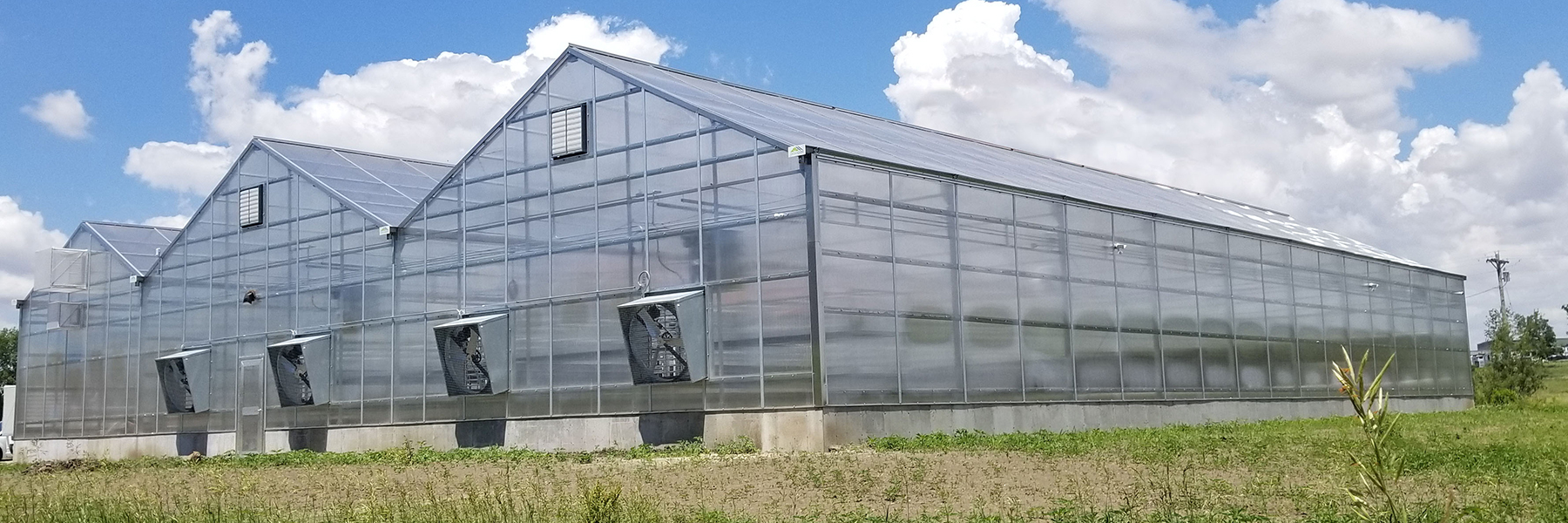6 Features Every Cannabis Grower Needs To Incorporate Into Their Greenhouse
Setember 9, 2021
Cannabis operations are difficult to get right, and the decision making involved in designing and installing a greenhouse can overwhelm even experienced growers. As the market gets more competitive, growers must find ways to gain an edge over competition and increase their bottom line. While there isn’t one right answer to greenhouse design, growers can outfit their structures with the latest advancements now, and reap rewards over time.
The features laid out in this blog can help growers make a lasting impression on the market and set them up for long-term success. Implementing the best equipment and automation will not only establish a streamlined growing process, but also help sustain quality, healthy cannabis through every harvest. Below are the six features every cannabis grower needs to incorporate into their greenhouse.
A HIGH-QUALITY ENVIRONMENTAL CONTROLLER
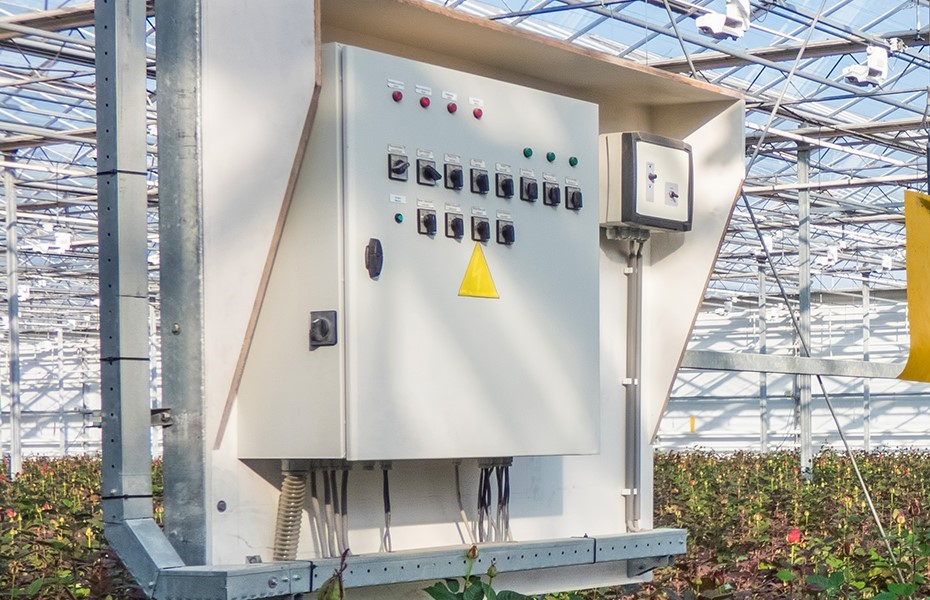
Smart controllers have become the foundation for total control over a greenhouse grow. They help take the guesswork out of growing cannabis, while minimizing room for error in an industry where the slightest inaccuracies can drastically affect profits. Integrating a smart controller is a key component to automating greenhouse systems, making it a crucial feature for operations looking to maximize profits.
A greenhouse controller connects with all environmental control equipment, combining their functions into one interface where growers can monitor and automate every component. This sets up a greenhouse for optimal efficiency and keeps growers from having to address equipment individually.
Smart controllers are the true top-of-the-line option, allowing growers to monitor their operations at any time and from any place. Growers are not available to watch their greenhouse at all hours of the day, so a smart controller is essential to keeping an operation efficient while workers are away. With the ability to link to smart phones or laptops, growers can keep an eye on their operation, even on a day away from the greenhouse.
By monitoring and reacting to environmental changes, a smart controller eliminates a lot of headaches that come with growing cannabis, streamlining environmental control and ensuring conditions remain ideal. This makes other necessary greenhouse features easier to manage and contributes to boosted plant health, increased profits, as well as minimized labor costs and plant loss.
AN AUTOMATED LIGHT DEPRIVATION SYSTEM
Light deprivation is standard practice in the cannabis industry, and while some operations still rely on manual labor to utilize it, automated light dep systems have changed the game for greenhouse growers. Cannabis cultivators know that controlling light cycles is critical to the plant, but those who don’t incorporate automation are missing out on its added benefits and potential cost savings.
With automated light dep, growers can produce an overall more efficient operation. Workers no longer need to waste time and energy manually pulling heavy black out curtains at a certain time, and instead, the system is programmed to keep itself on a strict schedule and provides darkness at the correct time every day. Creating a dark environment can be labor intensive in any grow, but utilizing automation provides complete control with minimal labor, leading to a more profitable operation.
GrowSpan’s fully automated blackout systems cast greenhouses into darkness in moments, and all GrowSpan cannabis greenhouses come equipped with a system. This is meant to give growers an easier time designing their ideal grow space, eliminating the worry of solving light cycle control from the very beginning.
Whether an operation is just starting out or is well-established, automated blackout systems are becoming a feature growers cannot ignore. For existing greenhouses, these systems can usually be integrated into the current structure, so almost any operation can take advantage.
TEMPERATURE AND HUMIDITY CONTROL
In greenhouses, all environmental factors intertwine to produce an ideal growing environment, but arguably no component takes more attention from growers than climate. Temperature, humidity and ventilation play a significant role in the health and growth of cannabis, making precise heating, cooling and ventilation systems crucial to production.
To regulate temperatures, growers need properly sized heating and cooling systems, which are tailored to their specific structure. Getting these systems custom designed is crucial to environmental consistency, but needs vary widely depending on greenhouse location, so it’s important for growers to work with industry professionals to make sure their equipment matches the circumstances of their operation.
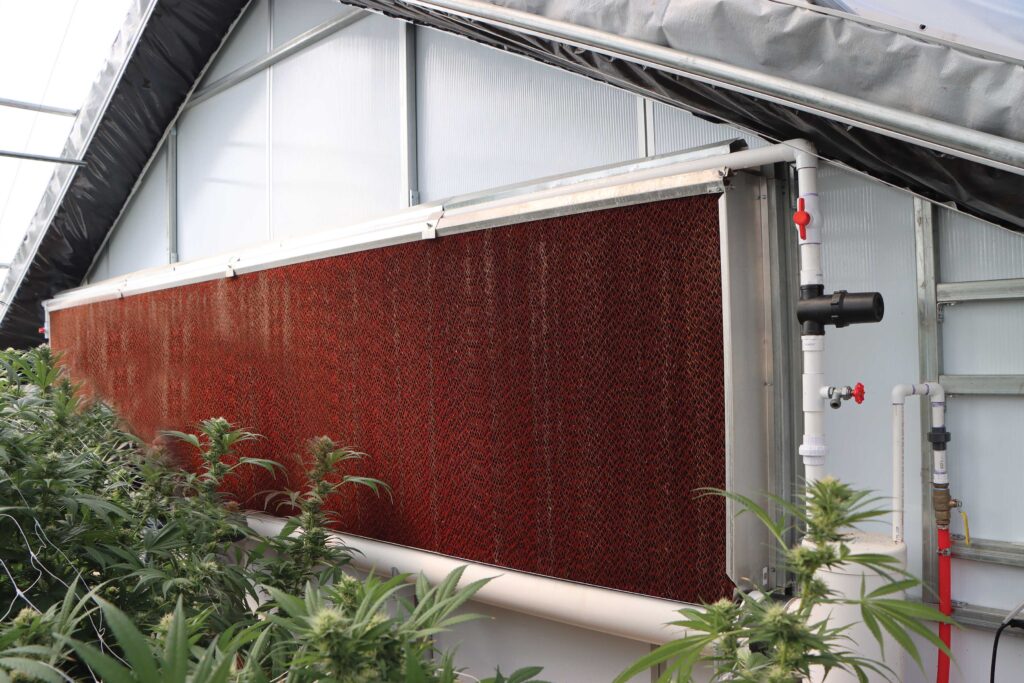
For grows that deal with colder climates or the winter months, energy-efficient heaters provide much needed warmth without breaking the bank, ensuring cannabis plants don’t succumb to shock from a drop in outside temperature. Greenhouses located in warmer climates often need additional equipment that can effectively cool entire structures. Evaporative wall coolers control high temperatures by taking advantage of the natural relationship between evaporation and humidity, turning evaporated water into a powerful cooling tool.
Purple Med Healing & Green Med Wellness, a cannabis operation based in the desert of Arizona, is one business who looked to negate the effects of extreme temperatures on their plants. In search of a greenhouse that could provide the climate control necessary to combat desert heat, they purchased a GrowSpan Series 2000 Blackout Greenhouse. Now, despite intense heat and a dry climate, their greenhouse uses an evaporative cooling system to produce high-quality cannabis year-round.
In cannabis operations, humidity is one of the biggest challenges growers face. Ventilation is a key factor in making sure humidity is properly managed, so that fungus or disease doesn’t proliferate within a greenhouse. Operations must obtain an efficient HVAC setup to achieve a balance of active and passive ventilation and keep humidity under control. Ventilation equipment allows the structure’s moist air to be replaced with drier outside air, creating a constant air exchange that balances greenhouse humidity.
With proper air movement, greenhouses can avoid dead air zones, which cause inconsistencies in growth and affect plant uniformity. The best active ventilation systems use a combination of equipment such as circulation fans, ridge vents and dampers to provide the needed air exchange. For passive ventilation, operations utilize natural air in their greenhouse design to help balance humidity. Naturally ventilating a greenhouse relies solely on wind pressure to push air through the structure and past the plants, allowing growers to reduce humidity while cutting utility costs.
AN AUTOMATED IRRIGATION SYSTEM
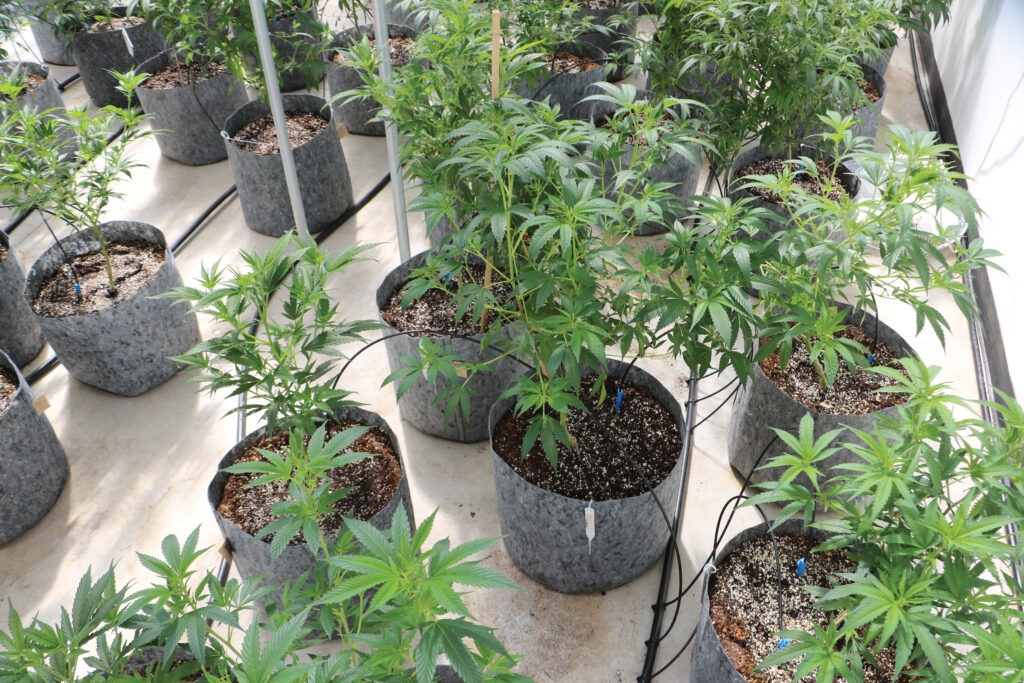
When introducing automation to an irrigation system, growers can provide a relatively inexpensive boost to their operation, while increasing their long-term savings and profits. These systems are not only cost-efficient, but when designed correctly, also significantly enhance plant production. Streamlining irrigation allows operations to achieve unmatched plant uniformity and maximize both the quality and yield of their entire harvest.
An automated system keeps growers from constantly worrying about the level of water their plants receive while nullifying the labor costs of manual irrigation. A sustainable and efficient irrigation strategy also reduces operating costs and mitigates disease. As operations develop, revising and improving upon this equipment setup allows for growth and expansion, along with staying relevant and up to date over time.
For cannabis, an ideal irrigation method to automate is drip irrigation. Through this method, drip emitters release a specific amount of water that is measured with timers and sensors, allowing for precise water application directly to the roots of cannabis plants. The delicacy of cannabis makes this the best option, as drip irrigation avoids getting the canopy wet and doesn’t affect the greenhouse’s humidity levels, like overhead irrigation systems.
When automated, drip emitters give growers an irrigation method that is consistent and reliable. It also helps mitigate plant illness, reducing the risk of foliar disease.
ENERGY-EFFICIENT GROW LIGHTING
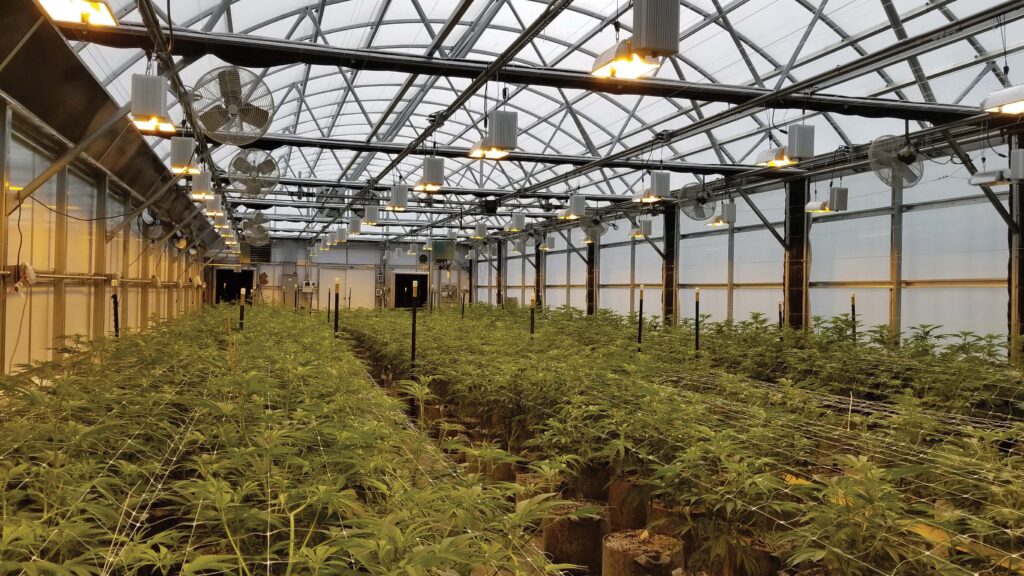
Lighting can be one of the largest and most expensive inefficiencies in cannabis cultivation, even in greenhouses where natural light helps mitigate the need for artificial lighting. Despite reaping the rewards of natural sunlight, greenhouse operations still need supplemental lighting to provide their buds the boost they need to stand out.
While searching for ways to save money, growers can cut costs on lighting without sacrificing plant quality. The newest LED lights generate very little heat, so cooling costs are much less compared to grows that use more traditional lighting methods, like high-pressure sodium lamps. The energy these fixtures use primarily goes to light instead of heat, so they are more efficient and can last much longer than other lighting options. This provides operations with significant energy savings, and, since they project such little heat, allows growers to place lights much closer to plants without the risk of burning them.
When used in tandem with an automated light dep system and the sun’s natural light, LED fixtures give growers complete control over photoperiods. An environmental controller allows the lights to be programmed, so growers can obtain a fully automated lighting plan.
OBTAIN AN ENGINEERED STRUCTURE
Working with industry professionals is the best strategy for operations when selecting a greenhouse. Just because a greenhouse meets all the specifications of a state-of-the-art grow, doesn’t necessarily mean the structure will meet state or local regulations, which makes getting an engineered greenhouse essential for starting out.
With companies, such as GrowSpan, growers can get an engineered structure that meets any requirement, whether it’s extreme weather or local building codes. When growers install their greenhouse, municipalities will likely inspect every aspect of the structure to make sure it is up to code. This makes purchasing anything but an engineered structure a huge risk, as one inaccuracy can cause significant delays and expenses for operations. Besides dealing with local regulations and weather, engineered structures also make future expansion and development a simpler process. GrowSpan can provide stamped engineered drawings for each greenhouse, making it easier to get an operation off the ground, as well as expand.
As cannabis growers attempt to make their operation stand out, these features can help them gain an advantage over competition and produce a consistent, high-quality product. The key to sustained success is effective planning, and implementing the best equipment and automation is something all greenhouse growers should prepare for.
To find the ideal features for your greenhouse, Request a Quote now.

